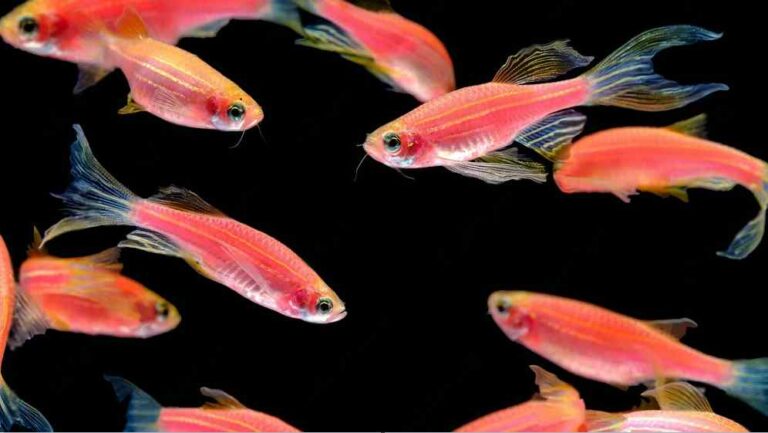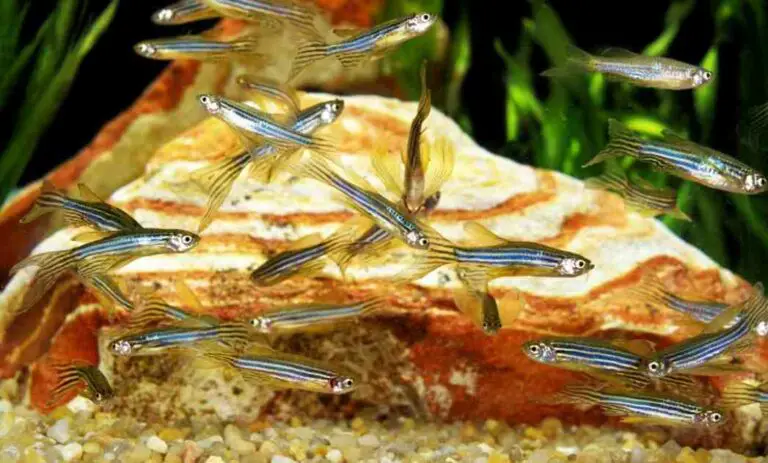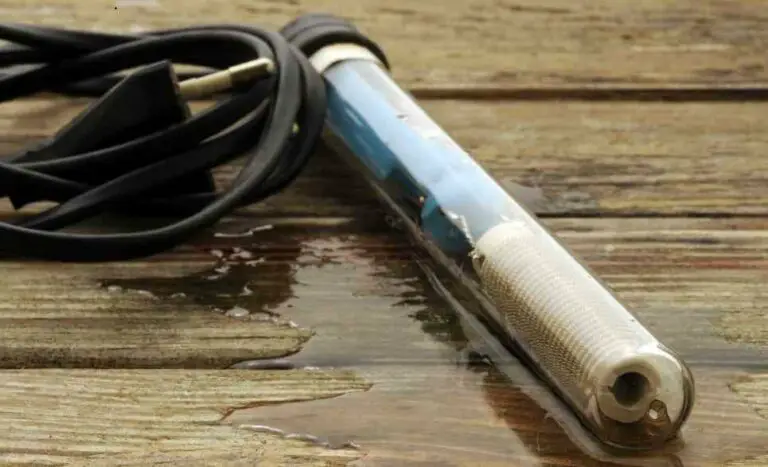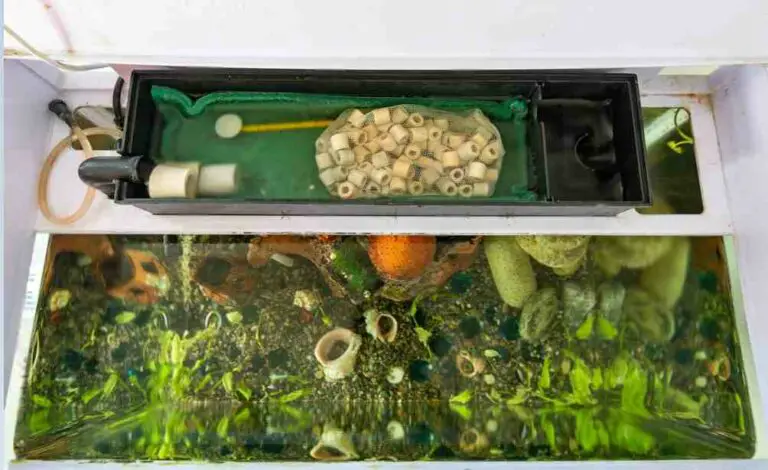Can Angelfish and Zebra Danios Live in the Same Tank?
As an aquarium hobbyist, I always seek new and exciting ways to design my community fish tanks. Lately, I have been considering an angelfish and Zebra Danios pairing. But will these two iconic freshwater species get along swimmingly or be a recipe for disaster?
At first glance, angelfish and Zebra Danios appear to have contradictory personalities. Angelfish are predatory cichlids that can grow up to 6 inches long. Though peaceful, they may snack on smaller tankmates that can fit in their mouths. Zebra Danios are petite, schooling fish, reaching only about 1.5 inches in length. They prefer safety in numbers and could become easy targets for aggressive fish.
However, these two species can live in harmony with a strategic tank setup and the selection of properly-sized angelfish. The key is providing an adequately spacious tank of at least 55 gallons, with plenty of plants, rocks, and driftwood to create hiding spots and break up lines of sight.
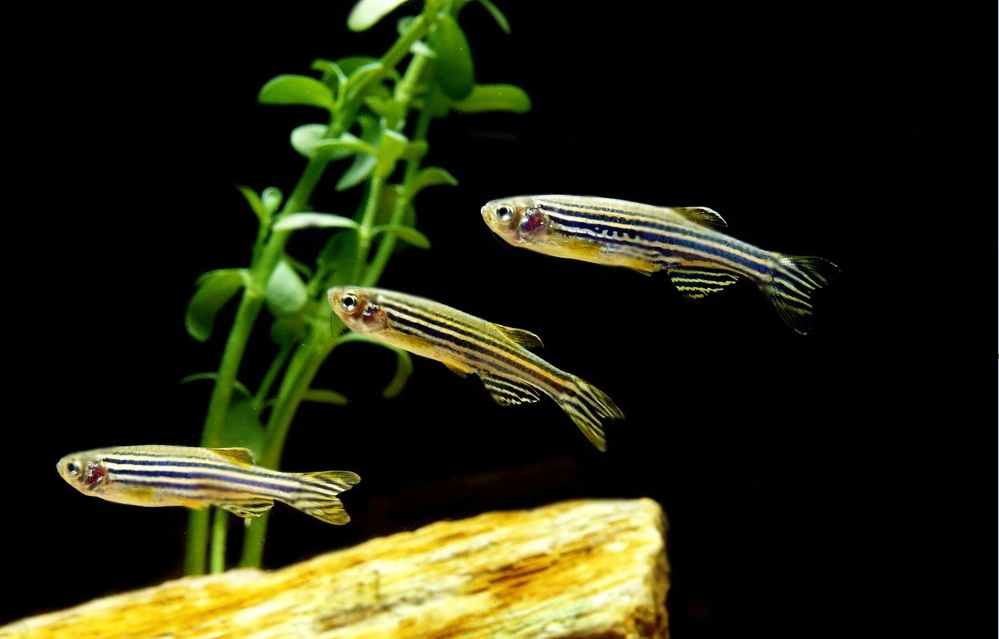
The Zebra Danios will feel more secure in a larger group of 10-12. Pick young angelfish under 3 inches long to reduce aggression and predatory instincts.
With some finessing of water parameters and tank conditions, angelfish and Zebra Danios can form a dazzling display together. The Zebra Danios will add flashes of vibrant color as they school together. The gracefully gliding angelfish will provide elegant contrast. This combo may offer the best of both worlds if given the proper environment to thrive in unity. When stocking a community aquarium, some forethought can allow unlikely friends to live in peace and brightness.
Table of Contents
- The Delicate Art of Keeping Zebra Danios and Angelfish
- Bigger School for Security
- Water Parameters
- Tips for properly feeding angelfish and Zebra Danios
- Angelfish aggression towards Zebra Danios
- Zebra Danios and angelfish fry
- Summary – key points on keeping Angelfish and Zebra Danios together
The Delicate Art of Keeping Zebra Danios and Angelfish
Aquarists must carefully consider tank requirements to ensure harmony between these striking but sometimes incompatible fish when housing angelfish and Zebra Danios.
Tank Size:
A minimum of a 55-gallon aquarium is recommended for an angelfish and Zebra Danios community. This allows for adequate swimming room as angelfish can reach 6-8 inches in length. Zebra Danios are small at 1.5 inches but need space to school in groups of 10-12 comfortably.
Water Parameters:
Both species thrive in soft, acidic water with a pH between 6.0 – 7.0. Water temperatures should be in the range of 74-82°F. Providing parameters in this range will keep both fish healthy and colorful.
Angelfish Size:
Select young angelfish under 3 inches in size. Larger, older angelfish are more likely to consume small tankmates. Raising angelfish together from a juvenile size reduces aggression.
Feeding:
Angelfish are carnivorous, while Zebra Danios are omnivorous. Feed a varied diet of flakes, pellets, frozen and freeze-dried foods. Distract angelfish with food at one end of the tank, allowing Zebra Danios to eat safely at the other end.
Filtration:
A robust filtration system is needed to handle the bioload. This also allows for optimal water movement and oxygenation for both species.
Zebra Danios and angelfish can live beautifully with careful attention to tank size, water quality, fish selection, and feeding. Their contrasting colors and behaviors can make for a dynamic freshwater aquascape. However, their differences must be reconciled through an aquarist’s watchful eye and prudent system design.
tinyfishtank.com
Bigger School for Security
While a minimum of 6 Zebra Danios can school together, a larger group of 12-15 is recommended when keeping them with angelfish. There are a few critical reasons for this:
Sense of Safety:
More Zebra Danios enhance their confidence and reduce skittish behavior. They will feel less threatened by the imposing presence of angelfish.
Difficult Targets:
A bigger school makes it harder for angelfish to single out individuals to prey on. Zebra Danios can quickly dart away into the group.
Spread Out Aggression:
Any nippy behavior by Zebra Danios will be distributed among themselves rather than focused on the angelfish. Large schools diffuse aggression.
Natural Shoaling:
Being highly social, Zebra Danios exhibit natural schooling behavior in larger numbers. This reduces stress and promotes healthy interaction.
Dynamic Display:
Bigger Zebra Danios schools create hypnotizing flashes of blue and red as they crisscross the tank, a visually stunning sight.
Ensuring the safety and comfort of Zebra Danios with angelfish requires providing them with a sufficiently large school. Though they may seem small, keeping 12-15 Zebra Danios result in a beautiful and balanced community for all inhabitants.
Water Parameters
Here are some key details on providing optimal water parameters for Zebra Danios and angelfish:
Ideal Water Parameters Zebra Danio
Temperature – 74°F to 82°F. Both species thrive in warm tropical waters. Aim for 78°F.
pH – 6.0 to 7.0, ideally around 6.5. They prefer soft, acidic conditions.
Hardness – 3 to 8 dKH. Soft water is vital, with a hardness of less than 10 dKH.
Filtration – Moderate water flow and turnover. Avoid strong currents.
Plants – Heavily planted tanks are ideal. Floating plants give shade. Tall stems create hiding spots.
Décor – Driftwood and leaves lower pH. Rocks and caves offer retreats.
Substrate – Peat moss on the bottom mimics natural habitat and buffers pH.
Recreating the warm, soft, acidic waters of their native Amazon environments keeps angelfish and Zebra Danios healthy and vibrant. Monitoring and adjusting conditions to meet their shared parameters is the key to aquarium success. A well-planted tank with hiding spots and peat moss substrate completes the ideal environment for raising these compatible species.
Tips for properly feeding angelfish and Zebra Danios
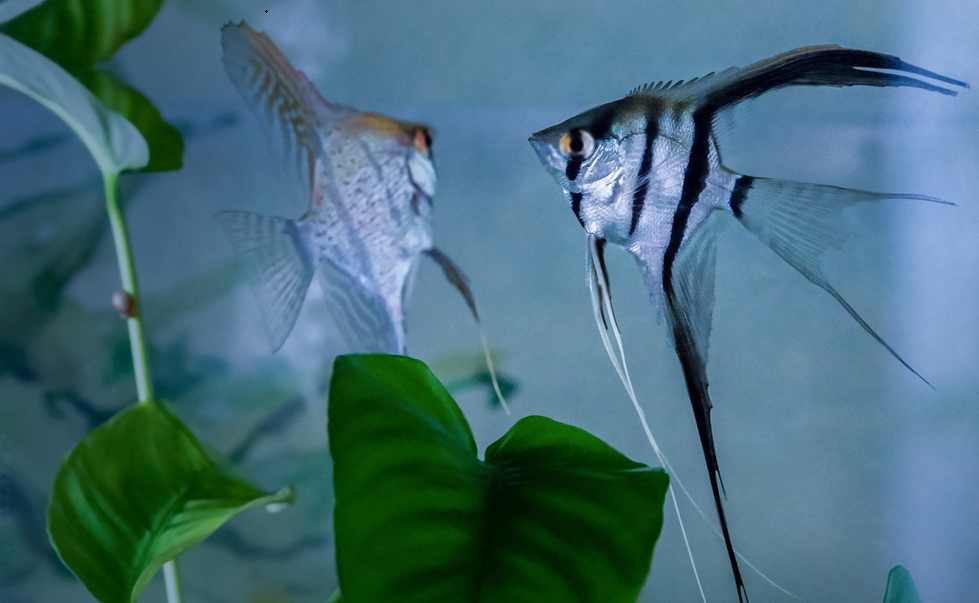
Food Types
Offer a varied diet of flakes, micropellets, frozen and freeze-dried foods.
Feeding Locations:
Drop flakes/pellets at the top for angelfish and mid-level for Zebra Danios. Avoid competition.
Meal Frequency:
Feed twice daily in smaller amounts. These species are prone to bloating.
Portion Control:
Feed whatever they can eat sparingly within 2-3 minutes. Zebra Danios have tiny stomachs.
Supplements:
Soak foods in vitamin supplements once or twice a week for nutrition.
Alternate Meaty Foods:
To promote color, offer frozen brine shrimp, daphnia, and bloodworms 2-3 times a week.
Veggie Treats:
Blanch zucchini, spinach, and kale in hot water to soften before feeding.
Remove Uneaten Food:
Don’t leave excess food to foul the water.
Angelfish and Zebra Danios can receive tailored nourishment with separate feeding zones and appropriate portions. A thoughtful diet ensures both fish showcase optimal health and vibrancy.
Robust Filtration System
While angelfish and Zebra Danios can persist without filtration with diligent maintenance, running efficient filters makes keeping them much easier.
Canister Filter:
A canister filter provides superior mechanical, biological, and chemical filtration for crystal-clear water. Models rated for 60-75 gallons are ideal.
Hang-On-Back Filter:
HOB filters are more affordable while still offering multi-stage filtration. Use one rated for 50+ gallons.
Add Filter Media:
Extra chemical filter media like activated carbon ensures the removal of impurities.
Air Stone:
Supplemental air stone or bubble wand drives oxygen circulation, which is especially beneficial for Zebra Danios.
Strong Flow:
Position the outlet to create moderate water movement without overwhelming currents.
Clean Regularly:
Weekly filter cleaning maintains flow rates and removes accumulated detritus.
Investing in a high-capacity filtration system with mechanical, biological, and chemical filtration is crucial for maintaining top water quality. This removes waste, processes toxins, and replenishes oxygen to support a healthy, thriving, angelfish Zebra Danios community.
Angelfish aggression towards Zebra Danios
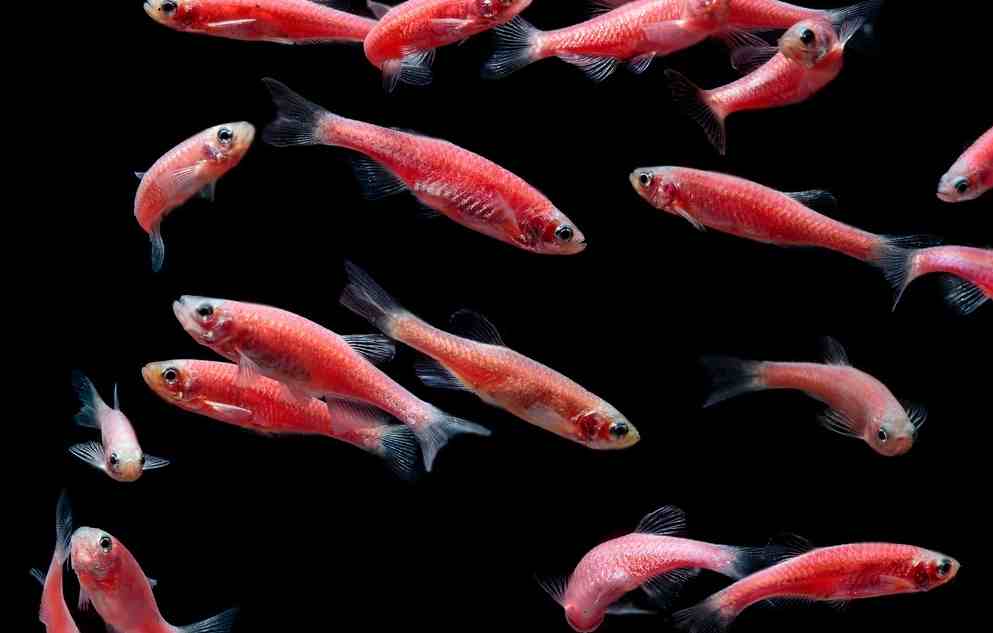
Though generally peaceful, angelfish may occasionally exhibit predatory behavior toward Zebra Danios under certain circumstances:
Hunger:
Well-fed angelfish are less likely to hunt tankmates. Overfeeding can prevent aggression issues.
Size Difference:
Larger angelfish over 5 inches are more prone to consume small fish like Zebra Danios. Keep the size difference minimal.
Territory:
Spawning angelfish become territorial and may strike at intruders, including Zebra Danios schools.
Boredom:
Inactive, understimulated angelfish sometimes nip fins out of aggression. Engage their instincts.
Tight Quarters:
Cramped tanks increase stress and conflict over resources and space.
New Tankmates:
Adding new fish can disrupt balance and trigger attacks until the hierarchy is settled.
Night:
Low light conditions may embolden angelfish to ambush sleeping Zebra Danios. Provide shelters.
With plenty of space, an enriched environment, a sizable Zebra Danios school, and proper feeding, attacks should be infrequent. Being alert to angelfish moods prevents disasters. Overall though, coexistence is entirely achievable.
Zebra Danios and angelfish fry
Predatory Instinct:
It’s in Zebra Danios’s nature to eat eggs and larvae of other fish. Very difficult to prevent entirely.
Isolate Breeders:
The best bet is to move a mated angelfish pair to a separate tank for spawning and raising fry.
Dense Plants:
Heavily planted tanks offer protection with hiding spots for fry. But Zebra Danios will still hunt.
Remove Adults:
Periodically take adult Zebra Danios out to feed, allowing fry time to eat infusoria.
Peat Moss:
Sinking eggs into peat can camouflage them. Some may survive to hatch.
Separate Fry:
Use a net to remove angelfish fry once spotted and house alone to grow.
While Zebra Danios and angelfish can live together, breeding success requires isolation or a strategic tank setup. Zebra Danios are cunning hunters that are difficult to outsmart! Removing fry is realistically the best way to raise them with this notorious egg and fry eaters present.
Summary – key points on keeping Angelfish and Zebra Danios together
In closing, angelfish and Zebra Danios can live beautifully in a well-planned community aquarium, despite their differences in size and temperament.
The keys to success are providing a sufficiently spacious tank of 55+ gallons, decorating with plenty of plants and hiding spots, selecting young angelfish under 3 inches, and maintaining a larger school of Zebra Danios.
Careful attention must be paid to water parameters, tankmates, and feeding to reduce aggression and support the needs of both species. Proper filtration and tank maintenance are also essential.
While challenging, the dazzling combination of angelfish and Zebra Danios can be rewarding for intermediate aquarists. These fish make an eye-catching underwater display when their habitat and social requirements are met.
With research and preparation, an angelfish and Zebra Danios community can thrive. The allure of these popular tropical fish in one aquascape makes the extra effort worthwhile for devoted aquarium enthusiasts.
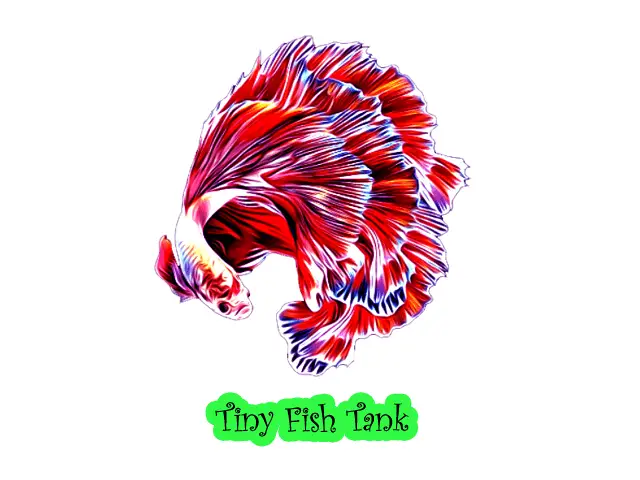
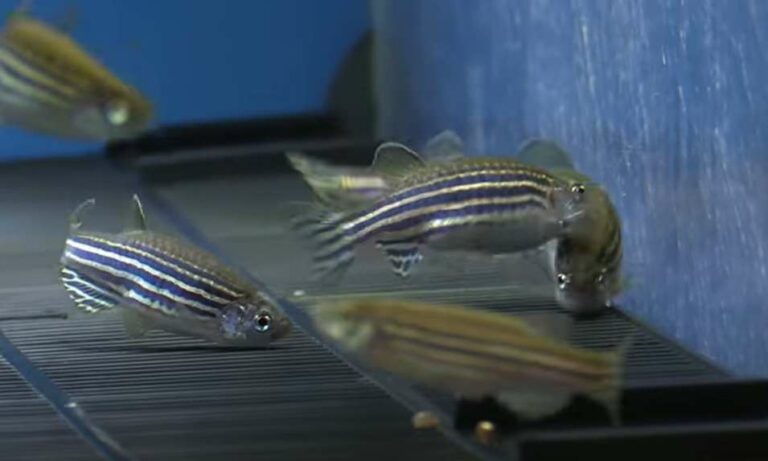
![The Curious Case of the Disappearing Zebra Danios [5 facts]](https://www.tinyfishtank.com/wp-content/uploads/2023/08/Disappearing-Zebra-Danios-768x458.jpg)
